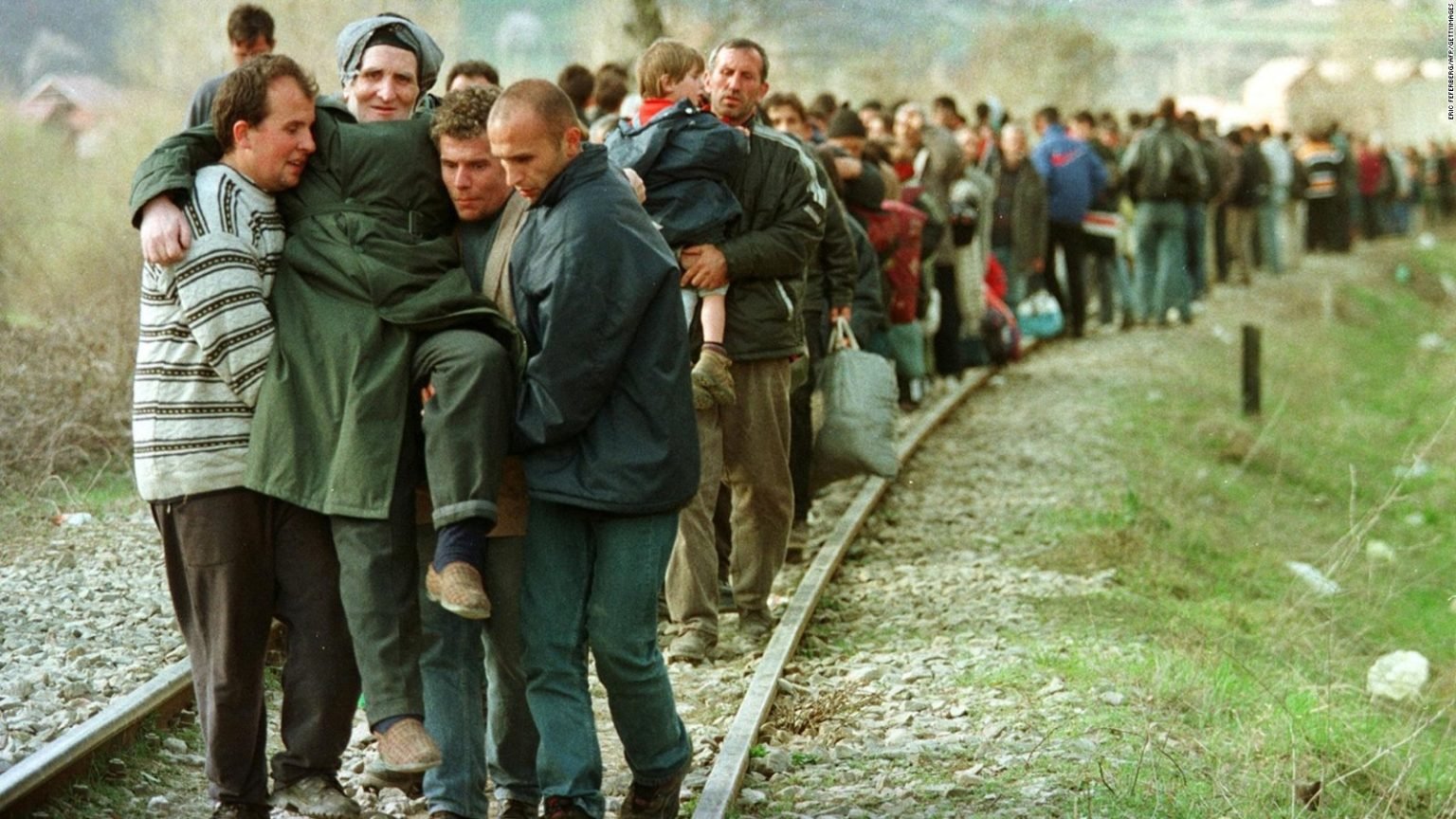By Arben Fetoshi
How is Serbia attempting to deceive with the narrative of ethnic cleansing in Kosovo?
Victimhood, as an age-old and historically mutable category, has evolved into a political strategy that dominates contemporary life. Serbia is employing this strategy as part of its hybrid warfare against Kosovo, aiming to “legitimize” the portrayal of Serbs as victims of ethnic cleansing policies before the international community. “By nature, victimhood is a claim to justice; the victim status authorizes the injured party to proclaim their harm and demand recognition and reparations,” explains Robert Horwitz in his essay, “Politics as Victimhood; Victimhood as Politics.” According to Horwitz, the central theme of this politics is the claim that a group is “a victim of a malevolent elite and institutional authority that negatively determines its life prospects.” Based on this logic and through fake news, Serbia is attempting to craft a deceptive “explanation” for terrorist attacks in the northern part of Kosovo.
The “Victim Card” at Play
The politics of victimizing Serbs in Kosovo has a long history, rooted in aggressive propaganda about “attacks by Albanian terrorists.” One of the most absurd cases is that of Đorđe Martinović in 1985, who injured himself with a beer bottle during anal masturbation in a meadow in Gjilan. Although he confessed to the act during investigations, Serbia widely propagated it as an attack by Albanian terrorists. This narrative was disseminated through media, special publications, and even a painting displayed at the Serbian Academy of Sciences and Arts, depicting Martinović as a Christ-like figure being crucified by four Albanians wearing traditional Albanian caps, one of whom attempts to insert something into him (Koha, December 14, 2018).
This manipulative victimhood propaganda has been extensively analyzed by French philosopher Pascal Bruckner in his book “The Temptation of Innocence: Living in the Age of Entitlement,” published by Algora Publishing in 2000. In the chapter “The Innocence of the Tormentor: The Victim in Serbian Propaganda,” Bruckner unpacks the deceitful narrative of the oppressor as martyr, which has “privileged” Serbia in the eyes of the international community (Epoka e Re, July 1, 2021). Serbia continues to exploit this approach today, with narratives about the “persecution” of Serbs in Kosovo. Seeking authorization to claim “justice,” it fabricates fake news to distort the truth in northern Kosovo—through the media to maintain domestic public support, and through political repetition in international forums. From President Vučić to the lowest-ranking Serbian official, their political discourse centers on complaints mingled with accusations.
Examples of this strategy are countless, reflected in speeches at the UN, meetings with the EU, and interactions with Russian and Chinese officials. In February 2024, Vučić lamented before the UN Security Council that terror against the Serbian population in Kosovo made survival impossible. Similarly, on October 30, 2024, Serbian Foreign Minister Đurić reiterated the same “argument” of discrimination against Serbs, urging the international community to intervene. The mix of complaints and accusations in international arenas is “grounded” in local reactions, such as the statement by the Serbian List party claiming that “the persecution of everything Serbian in Kosovo continues under Kurti’s orders.” Despite the abundance of such false and misleading content, Serbia persistently perpetuates its hybrid warfare under the guise of innocent victimhood, in line with Bruckner’s analysis.
Debunking the “Injustice” Claims
The claim that Serbs in Kosovo are victims of persecution is first contradicted by the constitutional and legal framework that guarantees their privileged rights under the Ahtisaari Proposal (Serbian as a second official language, guaranteed seats and double majority in the Assembly, representation in central institutions, etc.). No minority community in Europe enjoys more rights than Serbs in Kosovo. Beyond this, no significant grievances have been raised by Serbian citizens regarding injustices against them, apart from isolated politically provoked incidents such as the one involving Aleksandar Arsenijević.
Nevertheless, Serbia continues its disinformation campaign about alleged violence against Serbian citizens, politicizing every incident—even simple thefts, such as shoplifting cases in Prekoc, Novo Brdo (Sbunker, May 18, 2022). To make these claims more credible, it frequently involves the Serbian Orthodox Church as a “target” of alleged “Islamic” Albanian attacks. Although incidents of this nature are unrelated to religion, as noted by Tim Judah, the narrative obscures the fact that the Serbian Church has historically incited and supported nationalist militias (Koha, October 8, 2023). Following the seizure of an arms cache by police after the incursion in Banjska and the exposure of its role by Western officials (Kearns and Clark), Serbia has continued its campaign with accusations that Pristina is attempting to criminalize the Church.
In this way, Serbia amplifies its victimhood narrative—locally, to bolster public support, and internationally, to gain legitimacy. By applying the strategy of the “innocence of the tormentor,” Serbia sponsors tension, particularly in northern Kosovo, to justify its claims in international forums under the narrative of ethnic cleansing against Serbs. This narrative also seeks to misrepresent the actions of Kosovo’s institutions in the four northern municipalities, despite these actions being part of Brussels Agreement dialogues, such as phasing out old license plates, dismantling parallel structures, or implementing Central Bank regulations on the use of the dinar.
Kosovo, recognized by 117 countries and a member of various international organizations, has done nothing more than combat criminal gangs and terrorist resources of Serbia, aiming to establish law and order across its entire territory.

